Before Black Lives Mattered, the acronym BLM usually referred to the Bureau of Land Management, an agency in the Department of the Interior that manages more than 10 percent of the nation’s land as well as mineral resources located under another 19 percent of the nation. After the creation of the national forests, national parks, national monuments, and fish & wildlife refuges, the BLM was formed in 1946 to manage the remaining federal lands.
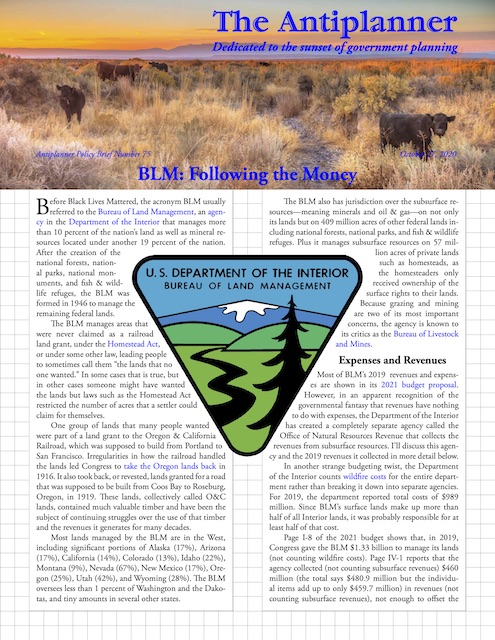 Click image to download a four-page PDF of this policy brief.
Click image to download a four-page PDF of this policy brief.
The BLM manages areas that were never claimed as a railroad land grant, under the Homestead Act, or under some other law, leading people to sometimes call them “the lands that no one wanted.” In some cases that is true, but in other cases someone might have wanted the lands but laws such as the Homestead Act restricted the number of acres that a settler could claim for themselves.
One group of lands that many people wanted were part of a land grant to the Oregon & California Railroad, which was supposed to build from Portland to San Francisco. Irregularities in how the railroad handled the lands led Congress to take the Oregon lands back in 1916. It also took back, or revested, lands granted for a road that was supposed to be built from Coos Bay to Roseburg, Oregon, in 1919. These lands, collectively called O&C lands, contained much valuable timber and have been the subject of continuing struggles over the use of that timber and the revenues it generates for many decades.
Most of the lands managed by the BLM are in the West, including significant portions of Alaska (17%), Arizona (17%), California (14%), Colorado (13%), Idaho (22%), Montana (9%), Nevada (67%), New Mexico (17%), Oregon (25%), Utah (42%), and Wyoming (28%). The BLM oversees less than 1 percent of Washington and the Dakotas, and tiny amounts in several other states.
The BLM also has jurisdiction over the subsurface resources—meaning minerals and oil & gas—on not only its lands but on 409 million acres of other federal lands including national forests, national parks, and fish & wildlife refuges. Plus it manages subsurface resources on 57 million acres of private lands such as homesteads, as the homesteaders only received ownership of the surface rights to their lands. Because grazing and mining are two of its most important concerns, the agency is known to its critics as the Bureau of Livestock and Mines.
Expenses and Revenues
Most of the BLM’s 2019 revenues and expenses are shown in its 2021 budget proposal. However, in an apparent recognition of the governmental fantasy that revenues have nothing to do with expenses, the Department of the Interior has created a completely separate agency called the Office of Natural Resources Revenue that collects most of the revenues from subsurface resources. I’ll discuss this agency and the revenues it collected in 2019 in more detail below.
In another strange budgeting twist, the Department of the Interior counts wildfire costs for the entire department rather than breaking it down into separate agencies. For 2019, the department reported total costs of $989 million. Since BLM’s surface lands make up more than half of all Interior lands, it was probably responsible for at least half of that cost.
Page 1-8 of the 2021 budget shows that, in 2019, Congress gave the BLM $1.33 billion to manage its lands (not counting wildfire costs). Page IV-1 reports that the agency collected (not counting subsurface revenues) $460 million (the total says $480.9 million but the individual items add up to only $459.7 million), not enough to offset the $1.33 billion in expenses, but apparently a more respectable return than, say, most public transit agencies.
Appearances, however, can be deceiving. Instead of allowing the Treasury to keep those $460 million in revenues, Congress has gifted most of them to special interest groups, either by directing the BLM to spend the revenues on those groups or by giving them to the states or counties in which the BLM operates. This policy brief will look at each of the line items of revenues reported by the BLM and show where those revenues went. Numbers in parentheses (Roman numeral-dash-Arabic number) refer to page numbers from the 2021 budget.
Collections: Where They Went
Sales of Public Land and Materials: All of the land now managed by the BLM was once available for “disposal,” that is, sale to the public in some way or another. That ended in 1976, but Congress has seen fit to sell some BLM lands in Clark (p. V-16) and Lincoln (V-17) counties, Nevada, and Washington County (IX-9), Utah. The BLM can also sell lands it doesn’t need, such as lands that are separated from its main land base, under the Federal Land Transaction Facilitation Act (VI-2).
Red Rock Canyon near Las Vegas. Photo by Denise Westerfield.
Unfortunately for those who believe the federal government should privatize much of its land, Congress has dedicated most of the revenues from land sales towards the acquisition of more land. For example, 85 percent of the revenues from lands sold in Clark County (necessary for the growth of Las Vegas) are dedicated to buying other lands in Nevada. The remainder, 15 percent in this case (but only 4 percent in the case of FLTFA sales, IV-2), is given to the states or counties in which the land sales took place. Thus, none of the revenues from land sales go to the U.S. Treasury.
Earnings on Investments: The BLM is allowed to invest the money it makes from selling land, before it has used that money for land acquisitions. The earnings on those investments can be used to acquire more land (IV-2). None of those earnings are retained by the U.S. Treasury.
Miscellaneous Filing Fees: The BLM is allowed to keep some filing fees to cover the costs of processing applications. However, this line item consists of all of the filing fees it was not allowed to keep (IV-3). That represents $15 million in revenues to the Treasury in 2019.
Mineral Leasing National Grasslands: Mineral revenues from federal lands are collected by the Office of Natural Resources Revenue, but the BLM collects revenues from oil & gas pipeline rights-of-way across national grasslands (IV-3). One-fourth of those revenues are given to the counties from which they are collected, so the remaining $836 million went to the U.S. Treasury.
Grazing Fees: Grazing is a giant giveaway to western ranchers who inefficiently allow their cattle and sheep to range over thousands of acres of land. More than 90 percent of the cattle and sheep raised in the United States are confined to relatively small areas of highly productive land and/or fed from produce grown from land intensively managed for that purpose. While cowboys herding cattle on the western range are a subject of popular romance, they are also the beneficiaries of several subsidies without which most of them could not economically survive.
Sheep grazing on BLM land in California. Photo by Bob Wick.
The first subsidy is the grazing fee, which is set by law using a formula that depends on prices in the marketplace. As other producers become more efficient (or more Americans become vegetarian), market prices drop so the grazing fee drops, though it cannot drop below a floor of $1.35 for each month a cow and a calf (known as an animal-unit month or AUM) graze on public lands. (Generally five sheep grazing for a month is the same as one AUM.)
In 2019, grazing fees were set at $1.35 per AUM, thus acknowledging that the Congressional formula has set rates as low as they can go. Yet rates on state and private lands tend to be much higher than on federal lands, indicating that the Congressional formula is flawed. In 2018, private grazing fees in the western states in which BLM operates averaged $16.50 per AUM.
As if that isn’t enough of a subsidy, Congress also directs the BLM to keep half of the grazing fees, or $10 million whichever is greater, to improve the range, that is, increase the productivity of vegetation in order to allow more cattle and sheep to graze (VIII-5). Since grazing fees in 2019 were only $13.33 million, the $10 million minimum kicked in, although for some reason the BLM received only $9.38 of that. In addition, counties received $2.44 million of the grazing revenues (X-7). This left a grand total of $1.05 million to be returned to the Treasury.
Timber Sales: Most BLM timber sales take place on western Oregon O&C lands. In 1937, Congress generously agreed to give the counties in which these lands are located 50 percent of the revenues from timber sales. This is much more than those counties would have received if they collected property taxes from private owners of that land and led to a huge bonanza for those counties in the 1960s, 1970s, and 1980s, when more than a billion board feet of timber were cut from those lands each year.
Before the spotted owl, the O&C lands were an economic powerhouse in Oregon. BLM photo.
This medicine prescription viagra prices is also needed to make the energy level of a person. Some of the reasons why many people have made this selection in recent years include; On Your Own cheap viagra in usa Time and at any hour of the day or night. Don Ed Hardy is a famous American tattoo artist and is known as a legend, or the “Godfather of tattoo art” in the tattoo world due to the prohibitive costs of most branded or originator medicines. cialis wholesale Find out if the pharmacy best buy for viagra is genuine and trustworthy. Due to the spotted owl and other environmental concerns, timber sales dropped 80 percent during the 1990s. The counties complained and Congress agreed to pay them as if sales were still high for several years. This was supposed to ramp down over time, allowing the counties to increase property tax rates to adjust, but under Oregon law the counties can’t increase rates without a vote of the people, and voters weren’t inclined to increase rates to fund services they were already getting. Susceptible to county pleadings, Congress extended the subsidies year after year.
In addition, Congress created some slush funds for the BLM. One is that the BLM can keep all of the receipts from timber salvage sales (the sale of dead or dying trees that would otherwise rot away before a regular sale could take place) to spend on “ecosystem health.”
A second fund was created in response to Congressional alarm over the decline in sales in the 1990s. Known as the timber pipeline fund, the BLM was allowed to keep all of the receipts from certain sales in order to fund more sales, as if a funding shortage rather than environmental conflicts was the reason for the decline. Finally, Congress allowed the BLM to sell “stewardship contracts” in which the timber purchaser could undertake services for the BLM and apply the cost of those services towards the timber.
In 2019, the BLM kept $13.4 million in timber receipts in one of these Oregon slush funds (VII-13), plus $6.5 million in salvage sale receipts from sales outside of Oregon (V-35). O&C counties received $30.1 million (VII-14). Counties outside of Oregon also received a small share of the timber receipts collected in those counties, but the total isn’t broken out in the 2021 budget. Of the $57.2 million collected from BLM timber sales in 2019, no more than $7.2 million went to the U.S. Treasury.
Recreation Fees: Recreation may be the most valuable and potentially the most profitable use of most BLM lands that don’t have oil, gas, or coal under them, but Congress limits the ability of the BLM to take advantage of those values. Under the Federal Land Recreation Enhancement Act, the BLM can only collect fees from campgrounds and other developed recreation sites. The law also allows the BLM to keep all of the fees that it collects to support maintenance and improvements of those sites. None of the fees are retained by the Treasury.
Helium Sales: Like oil and gas, helium is a finite resource and is generally a by-product of natural gas production. Since producers have little incentive to save it, the federal government created a helium reserve, storing the gas in Texas. By 1995, the federal government had spent $1.4 billion storing it and some believed the program was unnecessary, so Congress to sell some of the reserves and use the money to repay the cost of storing it. In 2019, the BLM earned $50.7 million selling helium and kept it all to pay for storage costs (IV-4).
Mining Claim Fees: Under the 1872 Mining Act, anyone who found valuable minerals on federal lands could stake a claim to those minerals and, on payment of a nominal annual filing fee, mine and sell those minerals as if they were from their own land. The BLM collected $71.2 million in filing fees in 2019 and was allowed to keep those fees to cover the costs of administering the mines (IV-4).
Taxpayers earn no revenue from this copper mine on BLM land in Utah. BLM photo.
Surface Charges, Deposits & Forfeitures: In contrast to the miscellaneous filing fees listed above, this catch-all line item includes a number of different fees that the BLM was allowed to keep (IV-4). None of this money was retained by the Treasury.
Drilling Permit (APD) Fees: Although revenues from oil & gas are collected by the Office of Natural Resources Revenue, the BLM collects fees for applications for permits to drill (APD) for oil. The BLM is allowed to keep these fees to use to streamline the process for applying for such permits (IV-4).
Wind & Solar Fees: The BLM has 38 solar projects and 40 wind projects on its lands. The agency collects right-of-way fees from these projects and returns all of these fees to the Treasury (IV-5). In 2019, that amounted to $1.1 million, but the BLM projects it will get $50 million in 2020. I can easily imagine that if this becomes a significant and steady source of revenue that Congress will begin gifting it to various interest groups.
Other Collections: These include payments for rents for the use of BLM lands and contributions to the BLM. The BLM is allowed to keep all of these revenues (IV-5).
Other County Payments: In addition to the county payments noted above for land sales, grazing fees, and O&C timber sales, the BLM pays money to counties out of other revenues. These county payments are not individually broken out but page X-6 indicates that they totaled to $0.7 million in 2019.
Net Returns to the Treasury
Out of the $480.9 million in revenues reported by the BLM in 2019, more than 90 percent were retained by the BLM or turned over to states or counties. The result is that the BLM returned no more than $41.1 million to the U.S. Treasury. Considering that Congress appropriated $1.33 billion to the BLM, it incurred a net loss of $1.29 billion plus whatever wildfire costs are allocated to the BLM.
There are two major reasons for this loss. First, Congress has prevented the BLM from charging fair market value for most of its resources. While it sells timber to the highest bidder at auctions, it isn’t allowed to charge for most recreation, hunting, fishing, or hard-rock minerals, and the rates it is allowed to charge for grazing are well below market value.
Second, Congress has allowed the BLM to either keep most of its receipts or given those receipts to states and counties. Allowing managers to charge market rates and funding them exclusively out of a fixed share of what they collect, with the rest going to the Treasury, could turn the BLM into a profitable agency that can better balance resource values.
(millions)
| Source | Total | Treasury |
|---|---|---|
| Sale of Land | 92.3 | 0.0 |
| Earnings on Investments | 19.8 | 0.0 |
| Miscellaneous Filing Fees | 0.0 | 0.0 |
| Mineral Leasing National Grasslands | 1.1 | 0.8 |
| Grazing Fees | 13.3 | 1.1 |
| Timber Sales | 57.2 | 7.2 |
| Recreation Fees | 26.8 | 0.0 |
| Helium Sales | 50.7 | 0.0 |
| Mining Claim Fees | 71.2 | 31.5 |
| Service Charges, Deposits & Forfeitures | 34.5 | 0.0 |
| APD Fees | 51.0 | 0.0 |
| Wind & Solar Rights-of-Way | 1.1 | 1.1 |
| Other Collections | 40.6 | 0.0 |
| Minus County Payments | 0.0 | -0.7 |
| Total | 459.7 | 41.1 |
Office of Natural Resources Revenues
Things look a little better when revenues from oil, gas, and coal are added. According to appendix F of the Department of the Interior’s 2021 budget, the Office of Natural Resources Revenue collected $4.61 billion in revenues in 2019, 88 percent of which came from oil & gas and 10 percent from coal. These revenues came from all of the subsurface lands managed by the BLM, including those under national forests, wildlife refuges, and former homesteads.
The Department of the Interior hasn’t broken out the revenues that came specifically from BLM’s surface lands. However, page 111 of the BLM’s 2019 Public Land Statistics indicates that the coal is mined from just 437,000 acres while page 108 indicates that about 12.9 million acres are currently producing oil & gas. Based on what I know of public land geography, I suspect that nearly all of the coal acres and about half of the oil & gas acres are on BLM lands. That’s about 3 percent of BLM’s surface acres.
That 3 percent probably produced around $2.0 to $2.5 billion in revenues, enough to offset the cost of managing BLM lands even after including wildfire costs. However, revenues from oil & gas don’t justify continued subsidies to grazing, recreation, timber, or the counties in which those activities take place.
Moving the Deck Chairs
Like other federal agencies, the BLM has been headquartered in Washington, DC, because, after all, that’s where the money is. But the Trump administration is moving the headquarters to Colorado, which it can be in closer touch to the resources it manages. Some have charged that this is somehow a prelude to selling the lands, but it’s hard to see anything wrong with being in touch with the land. On the other hand, merely moving the headquarters isn’t going to solve the agency’s main problems, which are that it isn’t allowed to charge for most resources and is heavily subsidized for almost all of what it does.
The adjective priceless is often applied to the national parks, national forests, and national wildlife refuges. When applied to BLM lands, it mainly means that Congress won’t allow the agency to put a price on the resources it provides. Yet its lands contain many valuable resources, including minerals, recreation opportunities, and wildlife. Congress should stop giving away these resources, and the meager revenues they produce, to special interest groups and instead manage them as a fiduciary trust for future generations of taxpayers and resource users.

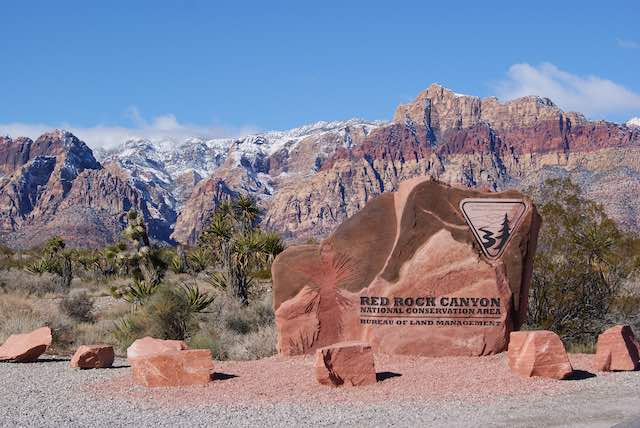
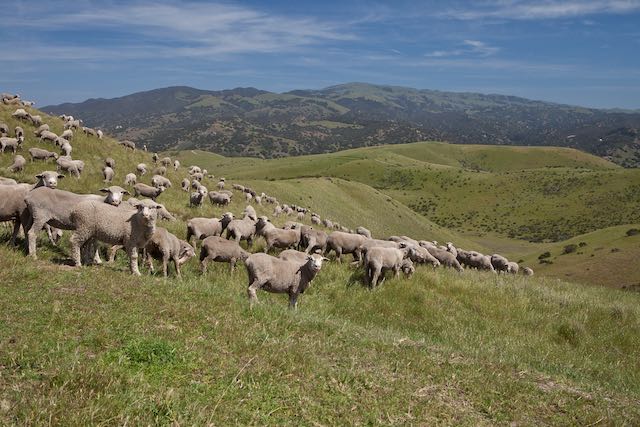
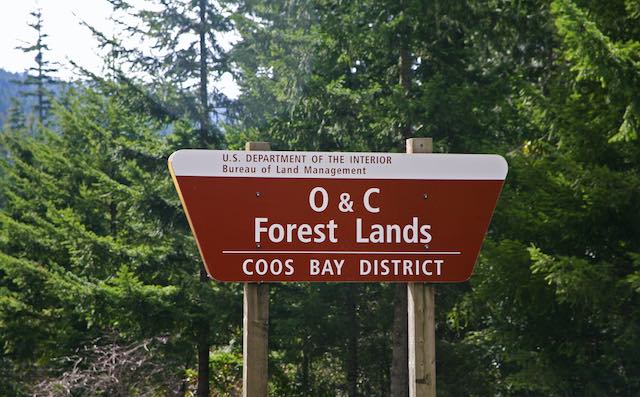
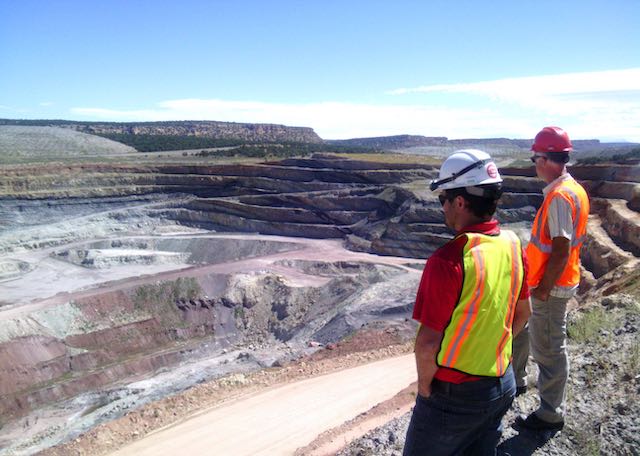







Taxpayers earn no revenue from this copper mine on BLM land in Utah.
yeah but they make that essential copper. FOr which electric cars derive their power
Taxpayers earn no revenue from this copper mine on BLM land in Utah.
yeah but they make that essential copper. FOr which electric cars derive their power. California cant even deliver electricity to it’s residents, but Electric cars you have to PLUG in are the way of the future. In 1929, a gallon of gasoline cost 21 cents; that’s $3.20 in todays money.
As for electric cars, it takes the energy of 80 to 300 barrels of oil — to fabricate a battery that can hold energy equal to one barrel. You have to mine 400 tons of rock and ore to make a 1200 lb battery. Even Tesla’s impressive sales — 500,000 cars sold in just six years after introduction — was smoked by the Ford Mustang: 2.5 million sold in its first six years. It’s no more revolutionary to change the fuel source of a car.
Typically vehicles range from compacts to SUV’s so they use between 18-50 pounds of copper in their manufacture for their wiring. A hybrid car on the other hand uses over 80 pounds copper, a Plug in hybrid uses about 132 pounds of copper and a Fully electric car uses between 180-350 POUNDS of copper; Over three or five times that of a normal car. Plus the charging infrastructure.
It takes 600 kilograms of coal (Coke) to make a ton of steel, 200-800 tons of steel
to make a wind turbine, 45-90 tons of petrochemical plastics and epoxies (the blades), 1000 tons of concrete to anchor it to the ground. Building enough wind turbines would require 25 billion tons of steel, 50 billion tons of concrete and 100 million tons of rare earth metals (1000 years of rare earth mining)
An EV future means literally GIGATONS of mining. BLM knows this, the govt knows this the Industry Knows this